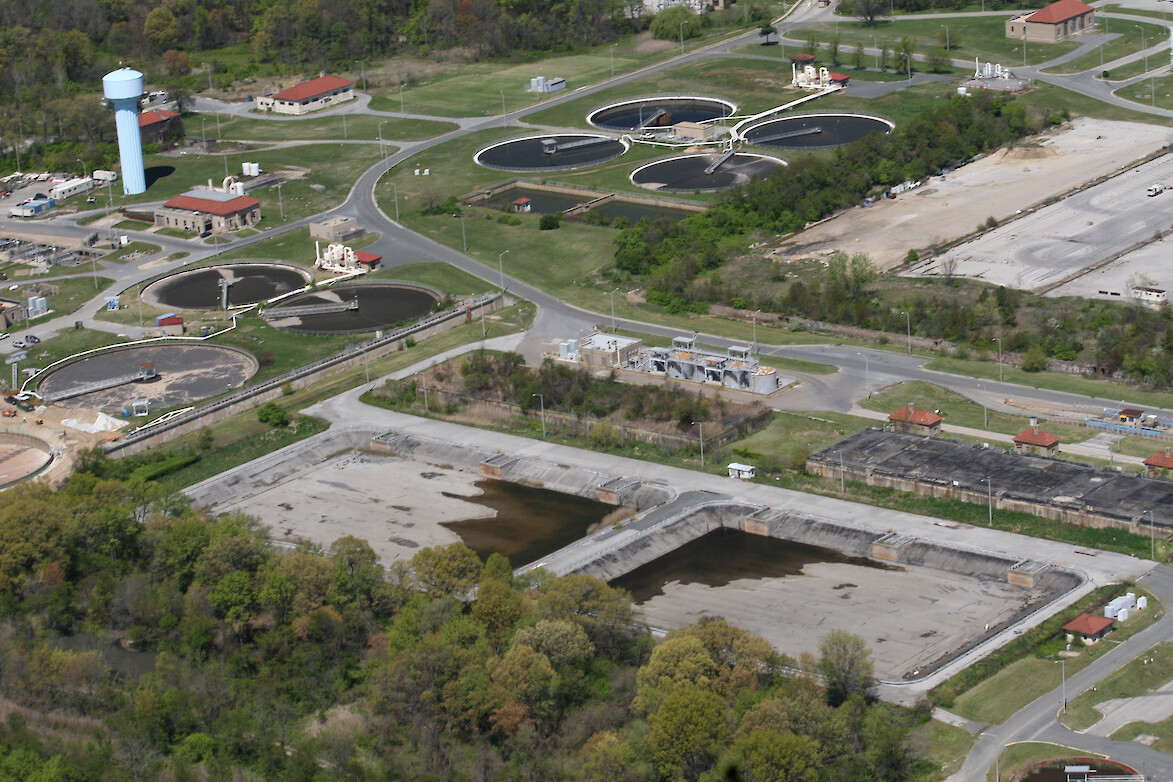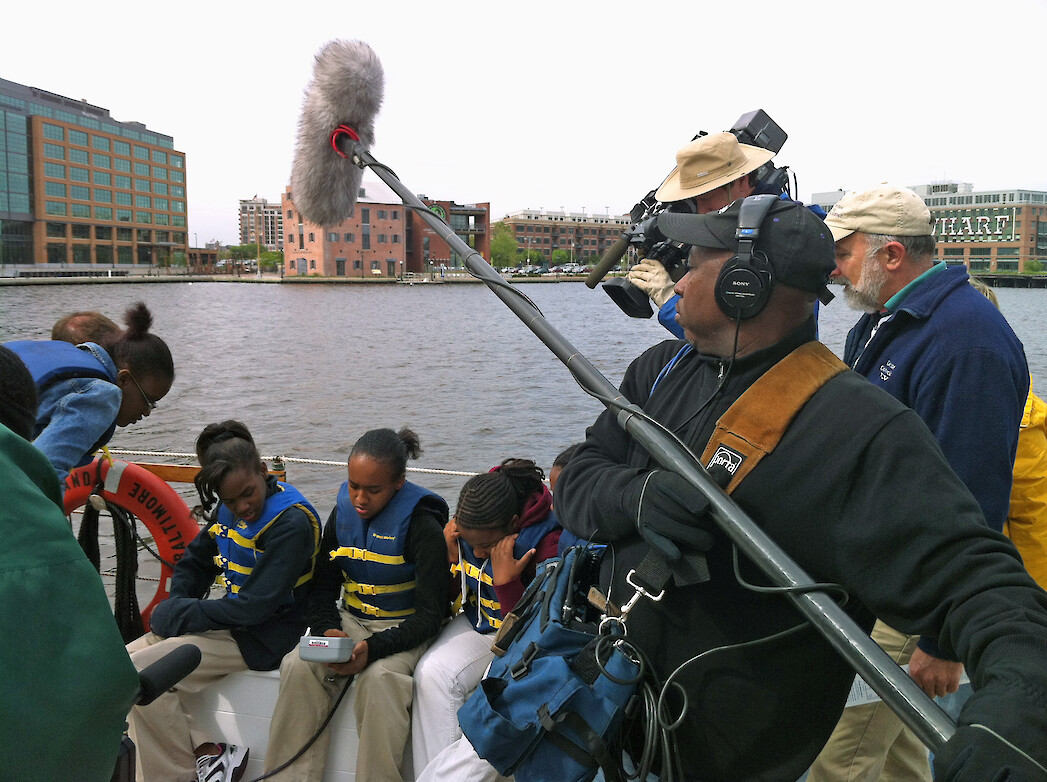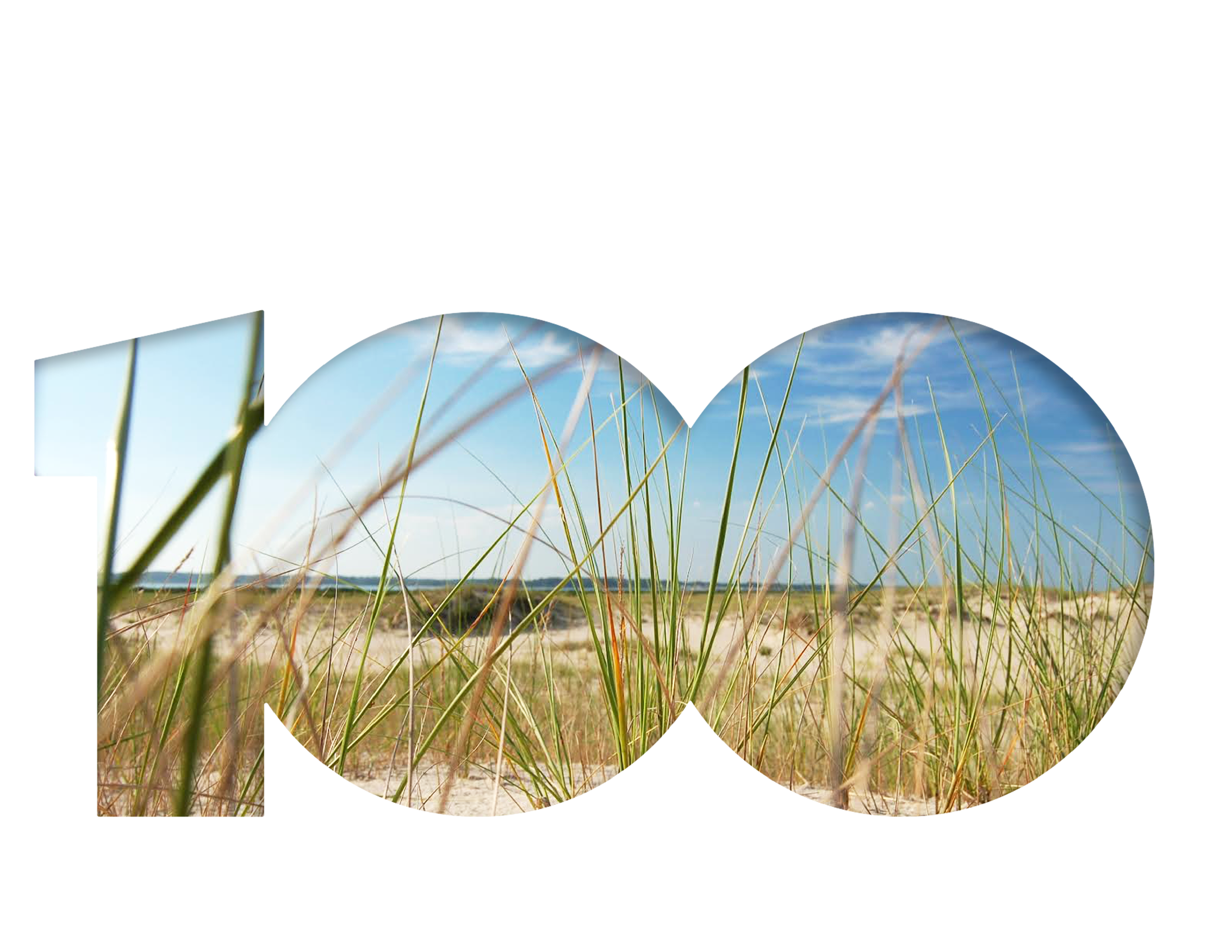Players and Problems: Socio-Environmental Management in the Chesapeake Bay
Zhongshi He ·Of all the coastal ecosystems in the United States, few are as studied- or as complex- as the Chesapeake Bay. Sometimes called the world’s best-understood estuary, the Bay reflects a nexus of overlapping jurisdictions, cultural histories, and ecological pressures. In a recent lecture, Professor Bill Dennison offered an insider's look at the Bay's stakeholders, the key socio-environmental challenges they face, and how science and policy are converging to guide restoration efforts.
1. Who’s Who in the Chesapeake "Zoo"?
Like climate change, the problems in the Chesapeake are multifaceted - and the network of organizations addressing them is equally vast. Professor Dennison humorously compares the region's many nonprofits, agencies, commissions, and research consortia as Pentagon (Figure 1).
- Advocacy Groups
- Chesapeake Bay Foundation (CBF) 1 – Known for the "Save the Bay" slogan and leading lawsuits2 to enforce stricter cleanup projects.
- Alliance for the Chesapeake Bay 3 – Supports grassroots efforts such as river walks and promotes "Riverwise" programs, which aims at reducing pollution and conserving water.
- Funding Organizations
- Chesapeake Bay Trust 4 – Manages funds from specialty license plates and tax checkoffs, and awards millions of dollars each year for community-led restoration efforts.
- National Fish and Wildlife Foundation 5 – Manages federal and corporate funding, focusing on biodiversity and water quality projects.
- Legislative & Regulatory Bodies
- Chesapeake Bay Program 6 – Established in 1983; the EPA-led "hub" where federal agencies, state governments, universities, and NGOs coordinate effort.
- Chesapeake Bay Commission 7 – A tri-state legislative advisory group bridging Maryland, Virginia, and Pennsylvania to shape Bay-related policies.
- Research & Monitoring
- Chesapeake Research Consortium 8 – A collective of seven major research institutions (including the University system of Maryland, the Virginia Institute of Marine Science, the Virginia Tech, the Johns Hopkins University, the Pennsylvania State University, the Old Dominion University, and the Smithsonian Institution).
- Chesapeake Monitoring Cooperative 9 – Provides training to non-professionals and integrates data from citizen scientists to fill in the gaps in water quality monitoring.
- Education & Extension
- Maryland Sea Grant 10 & Virginia Sea Grant 11 – Provides grants for research, education, and outreach that are key to training the next generation of environmental scientists.

Figure 1. The major organizations involved in Chesapeake Bay restoration, organized by their primary roles in advocacy, funding, legislation, research, monitoring, and education. Graphic by Dr. Dennison.
2. Converging Threats and Shared Impacts
Just as climate change can manifest itself as drought in one region and flooding in another, Chesapeake Bay communities face overlapping socio-environmental threats:
- Nutrient Overloading and Algal Blooms
- Excess nitrogen and phosphorus from agricultural fertilizers, stormwater runoff, and wastewater treatment plants lead to algal blooms.12 These blooms accelerate hypoxia (low-oxygen "dead zones") that stress or kill fish, crabs, and oysters.
- Sea Level Rise and Coastal Flooding
- Coastal communities on Maryland's Eastern Shore are already retreating from rising waters. Cities like Cambridge face "nuisance flooding" during high tides, and low-lying farmland can become saltwater marshes over time.13
- Urban Growth and Land Use Change
- Rapid urbanization around the I-95 corridor (including Washington, D.C. and Baltimore) is altering natural drainage patterns. Hard, paved road surfaces easily send polluted runoff into tributaries. In addition, the expansion of farmland brings more fertilizers into the Bay.14
- Climate change amplifies everything
- Warmer temperatures changes are pushing crabs and seagrass farther north, while setting the stage for more intense storms and flooding events similar to Hurricane Agnes (1972) and Hurricane Isabel (2003), but the situation is improving as comprehensive restoration progresses.15
3. Pathways to a Healthier Bay
- Wastewater Treatment Innovations
- Since Maryland began funding upgrades to wastewater treatment plants, nitrogen discharges have declined. DC's Blue Plains plant is a model of state-of-the-art treatment, demonstrating how a single infrastructure improvement can improve water quality downstream.16 In Maryland, the Patapsco and Back River treatment plants were not originally performing as expected 17, but recent engagement by the Maryland Environmental Service have these plants performing up to specifications.18

- Better Agricultural Practices
- Many programs help farmers to plant cover crops that capture residual nutrients. No-till farming, buffer strips, and manure management also reduce nutrient runoff.19
- Policy Tools and Enforcement
- The Chesapeake Bay Total Maximum Daily Load (TMDL) sets nutrient "diet" goals for the Bay states.20 Although some states are falling behind, the legal framework is forcing progress. Recent additional steps, such as lawsuits filed by nonprofit organizations (e.g., CBF) against underperforming states or agencies, aim to ensure that each partner is doing its job.21
- Community Engagement and Education
- Citizen science programs (such as the Chesapeake Monitoring Cooperative) empower residents to measure water quality. Educational efforts such as the Chesapeake Bay Foundation's student field trips build an ethic of stewardship in younger generations.22

- Climate Adaptation
- Living shorelines, wetland restoration, and strategic retreat from some vulnerable coastal areas are all part of a progressing conversation. Maryland's comprehensive planning includes protecting "critical areas" from development and creating "green buffers".23
4. What’s next?
Public opinion on Chesapeake Bay restoration, whether optimistic or dismissive, does not change the truth that urgent action is needed. The Bay's shallow, nutrient-retaining nature, once a hallmark of its productivity, now concentrates pollution from fields and cities. Restoration successes, such as reduced nitrogen loads from wastewater treatments and the partial resurgence of underwater grasses, show that targeted policies and enforcement can yield sound benefits. But climate-related stressors, including sea-level rise and more intense storms, are raising the stakes and highlighting the need for broader, more integrated approaches.
As the 2025 deadline for measurable water quality improvements draws near, the conversation must expand beyond government mandates. Agricultural communities, coastal residents, municipal experts, and academic researchers all have a role to play. Equitable funding, citizen science, and local co-management programs can foster shared ownership of the Bay's future, rather than placing decisions in distant halls of power. By coordinating efforts across the watershed and ensuring that historically impacted communities lead the design of restoration, the Chesapeake Bay can continue its slow but steady recovery and set an example of resilience in the face of increasing environmental pressures worldwide.
References:
- Chesapeake Bay Foundation homepage: https://www.cbf.org/index.html
- John Surrick. Settlement Reached in Suit Over Pennsylvania Pollution. (2023, July 12). Press statement from https://www.cbf.org/news-media/newsroom/2023/federal/settlement-reached-in-suit-over-pennsylvania-pollution.html
- Alliance for the Chesapeake Bay homepage: https://www.allianceforthebay.org/
- Chesapeake Bay Trust homepage: https://cbtrust.org/
- National Fish and Wildlife Foundation homepage: https://www.nfwf.org/
- Chesapeake Bay Program homepage: https://www.chesapeakebay.net/
- Chesapeake Bay Commission homepage: https://www.chesbay.us/
- Chesapeake Research Consortium homepage: https://chesapeake.org/
- Chesapeake Monitoring Cooperative homepage: https://www.chesapeakemonitoringcoop.org/
- Maryland Sea Grant homepage: https://www.mdsg.umd.edu/
- Virginia Sea Grant homepage: https://vaseagrant.org/
- Horn Point Laboratory. (2015, June 1). Study shows harmful algal blooms in Chesapeake Bay are more frequent. https://www.umces.edu/hpl/story/2015/jun/01/study-shows-harmful-algal-blooms-chesapeake-bay-are-more-frequent
- National Geographic. Sea Rise and Storms on the Chesapeake Bay. https://education.nationalgeographic.org/resource/sea-rise-and-storms-chesapeake-bay/
- Chesapeake Bay Foundation. What Happens on the Land Matters to the Bay. https://www.cbf.org/issues/land-use/
- Dan Charles. (2018, March 5). Grass is back in the Chesapeake, and crabs will follow. https://www.northcountrypublicradio.org/news/npr/590347724/grass-is-back-in-the-chesapeake-and-crabs-will-follow
- DC Water. The largest advanced wastewater treatment plant in the world. https://www.dcwater.com/about-dc-water/what-we-do/wastewater-treatment/blue-plains
- Chesapeake Bay Foundation. What’s going on with pollution issues related to Baltimore’s Patapsco and Back River wastewater treatment plants? https://www.cbf.org/about-cbf/locations/maryland/issues/baltimores-wastewater-treatment-plants.html
- City of Baltimore Department of Public Works. Wastewater Facilities Consent Decree Case No. 24-C-22-000386. https://publicworks.baltimorecity.gov/sites/default/files/BWW%20CD%20Report-February-15-2025.pdf
- Chesapeake Bay Foundation. How farms can improve water quality, build resilience, and fight climate change. https://www.cbf.org/issues/agriculture/eight-key-conservation-practices-used-in-regenerative-agriculture.html
- United States Environmental Protection Agency. Chesapeake Bay Total Maximum Daily Load (TMDL). https://www.epa.gov/chesapeake-bay-tmdl
- Chesapeake Bay Foundation. We’re suing the Environmental Protection Agency for its failure to enforce the Clean Water Act. Here’s what you need to know. https://www.cbf.org/blogs/save-the-bay/2020/09/were-taking-epa-to-court.html
- Chesapeake Bay Foundation. Student field programs. https://www.cbf.org/join-us/education-program/field-programs/index.html
- Chesapeake Bay Program. Chesapeake Bay Program announces highest number of forest buffers planted across watershed since 2016. https://www.chesapeakebay.net/news/pressrelease/while-forest-buffer-restoration-advances-in-the-bay-watershed-forest-loss-offsets-gains
About the author
Zhongshi He

Zhongshi He is a second-year Ph.D. student at the Institute of Marine and Environmental Technology, University of Maryland Center for Environmental Science. He earned his bachelor’s degree in biological sciences from Shanxi University and a master’s degree in hydrobiology from the Institute of Hydrobiology, Chinese Academy of Sciences. He is currently conducting research in Dr. Yantao Li’s lab, focusing on applying adaptive evolution strategies to enhance microalgae’s carbon capture efficiency against future elevated CO₂ conditions.
Next Post > Climbing Down the Ivory Tower
Comments
-
Sabine Malik 9 months ago
This is a really great summary of how environmental management occurs in the Chesapeake Bay! Many agencies have very similar names, so it can be confusing to understand the distinctions between them, even for those of us involved in environmental work in the region. I think public awareness of how many programs we have targeting this issue is very important. We are fortunate to have so many hands working to solve the issues we're having in the bay!
-
Wyatt Palenchar 9 months ago
I think you did a great job identifying the issues the Chesapeake Bay is facing and the different strategies that different organizations are using to address them.
-
Lina Goetz 9 months ago
You highlighted the key points about this topic really well and in a way that was very easy to follow while also being super informative. The graphics you included brought all of the details together very nicely. Great Job!
-
George Anim Addo 9 months ago
This blog post is a valuable resource for anyone interested in learning more about the Chesapeake Bay and its restoration efforts. It effectively communicates complex information in an accessible and engaging manner.
-
M.J. Parsons 9 months ago
Thank you for putting this blog together. You did a great job of identifying and communicating the functions of each commodity. This really highlighted the importance of the work and number of people committed to furthering the effort. Nice work!
-
Vanessa Mukendi 8 months ago
You did a great job with this blog. I appreciate the overall layout of the blog of that kind of follows who? what? where? as well what is next. Great visuals with using the pentagon to break down the different organizations and the photo under community engagement shows the continues in person citizen science work.

